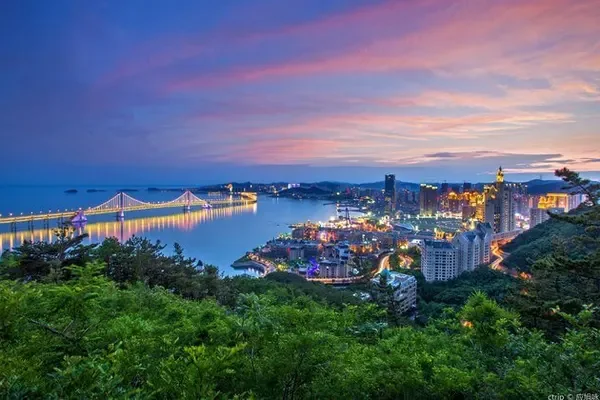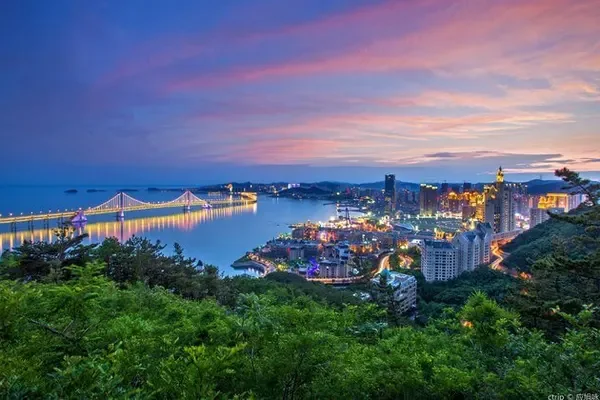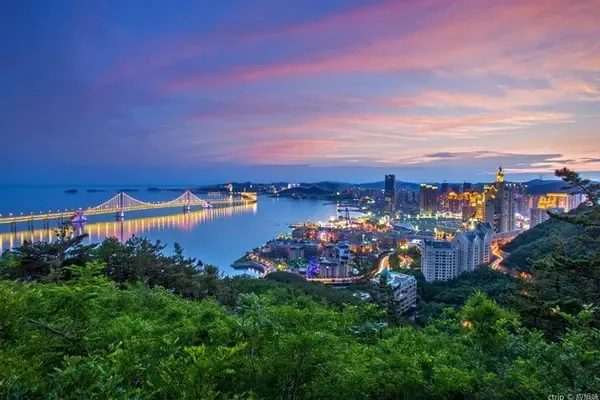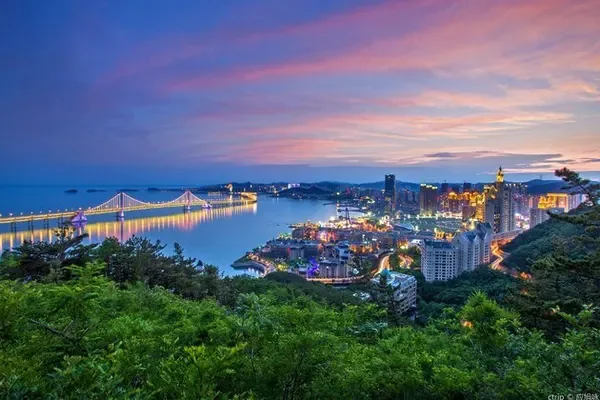Here is the itinerary record of Beijing on the 4th, excluding the work part. Tourist attractions are mainly historic sites.
October 25, 2019 (Beijing weather: fine, 2 to 14 degrees)
G14, departing from Shanghai Hongqiao Station at 15:00 and arriving at Beijing South Railway Station at 19:36.


Arrive at Beijing South Railway Station.

Get a hamburger first.


Take the subway to Tiananmen Square. Visitors from other places can buy a Beijing Transportation Card first, and you can get a 50% discount on taking the bus.

When you get out of Tiananmen East Station of Metro Line 1, you will first see the National Museum of China on the south side of Chang'an Avenue.

Chang'an Street.

After passing Tiananmen Square, tourists need to go through security checks.



Walking through Tiananmen Square.









Tiananmen Square, the first batch of national key cultural relics protection units announced by the State Council on March 4, 1961, revolutionary sites and revolutionary memorial buildings.





Monument to the People's Heroes, the first batch of national key cultural relics protection units announced by the State Council on March 4, 1961. The era is 1958. It belongs to the category of revolutionary sites and revolutionary memorial buildings.












Beijing Subway Line 1.

Stayed at Jinjiang Inn Beijing Xisi Branch that night, business room A, 386 yuan.

October 26, 2019 (Beijing weather: sunny, 3 to 16 degrees)
Jinjiang Inn Beijing Xisi Branch is about 400 meters from the exit of Xisi Station of Metro Line 4.

Access Fuchengmen Inner Street of Jinjiang Inn Beijing Xisi Branch.


The Ministry of Natural Resources building near the hotel.

Friends who are interested in geology can visit the China Geological Museum.

Guangji Temple, a national key Buddhist temple in the Han nationality area, and the seat of the Chinese Buddhist Association. Guangji Temple, the sixth batch of national key cultural relics protection units announced by the State Council on May 25, 2006, is an ancient building, dating from the Qing Dynasty, and located in Xicheng District, Beijing. Tickets are not charged.



















The former residence of Lu Xun in Beijing, the sixth batch of national key cultural relics protection units announced by the State Council on May 25, 2006, important historical sites and representative buildings in modern times, from 1924 to 1926, located in Xicheng District, Beijing. The former residence of Lu Xun is the Beijing Lu Xun Museum, which is free to visit.




























Fuchengmen Inner Street.


Beijing's bus stop signs are not yet intelligent, and passengers do not know how long it takes to wait for the bus.

Since the bus is priced according to the distance, the card must be swiped when getting off the bus, otherwise the price will be calculated according to the highest fare.

Not far to the east of Lu Xun's former residence is the White Pagoda of Miaoyin Temple, which is a national key cultural relic protection unit. Unfortunately, it is not open to the public due to internal renovations.

Qingfeng Baozi Shop.



1. There are 3 fresh meat buns for 5 yuan.


There is also the Emperor Temple of the past dynasties nearby, which is also a valuable national key cultural relic protection unit, and it is also closed to the public due to internal renovation.

The former site of the Peking Library on the west side of Beihai Park is the sixth batch of national key cultural relics protection units and is not open to the public. When I passed by the bus, I saw the gate was open, and I thought I could stand at the gate and take a picture of the yard. But when I got out of the car and walked around to the door, the door was closed.




Beihai and Tuancheng, the first batch of national key cultural relics protection units announced by the State Council on March 4, 1961, ancient buildings and historical monuments, dated to the Ming and Qing Dynasties, located in Xicheng District, Beijing. This is the Beihai Park that everyone is familiar with, and the ticket is 25 yuan.

If you enter Tuancheng alone, the ticket is only 1 yuan.

The picture below is the outer wall of Tuancheng. Tuancheng was originally a small island in Taiye Pool. In the Yuan Dynasty, the Yitian Hall was built on it, and in the Ming Dynasty, it was rebuilt and renamed the Chengguang Hall. A city wall was built around the island, and the top of the wall was built as a battlement crenel, which initially established the scale of the Tuancheng.





Seeing the beautiful scenery of Beihai Park, people can't help humming "Let's paddle".
















The following photos were taken in Beihai Park.

































From the east gate of Beihai Park, walk along Jingshan West Street to Jingshanqian Street to see the Forbidden City. The picture below shows the north gate of the Forbidden City.

The corner tower of the Forbidden City.

The Red Building of Peking University, the first batch of national key cultural relics protection units announced by the State Council on March 4, 1961, revolutionary sites and revolutionary memorial buildings, is located at the beach in Dongcheng District, Beijing. Admission is free. The Red Building was one of the main campuses of Peking University from 1916 to 1952. The Red Building of Peking University was originally the First Hospital of Peking University. The whole building is built with red bricks and roofed with red tiles, hence the name "Red Building". It was built in 1916 and completed in 1918. The Red Building is an important place where Li Dazhao, Chen Duxiu and Mao Zedong first spread Marxism, democracy, science and progress in the modern history of China. During the May 4th Movement in 1919, the Red Building and the playground to the north were the source of the anti-imperialist patriotic movement.






Principal Cai Yuanpei.





Thematic exhibitions of the building.









The National Art Museum of China, founded in 1958, is one of the top ten buildings for the 10th anniversary of the founding of the People's Republic of China. Admission is free.














At the intersection of Beiyanhe Street and Wusi Street, the building on the left is the "Red Building".

The north gate of the Forbidden City has a lot of tourists.

Jingshan, the fifth batch of national key cultural relics protection units announced by the State Council on June 25, 2001, is an ancient building category, dating from the Ming and Qing Dynasties, and is located in Xicheng District, Beijing. The picture below shows the Jingshan Gate. Tickets are 2 yuan.






The place where Ming Chongzhen Zhu Youjian hanged himself. Li Zicheng's uprising army invaded Beijing in March 1644. Chongzhen fled to Jingshan on March 19. He felt ashamed of his ancestors' foundation and committed suicide with his belt on the crooked pagoda tree under Guanmiao Pavilion. During the ten-year turmoil, the old pagoda tree was cut down as the "four olds". In 1981, a new ancient pagoda tree was transplanted on the original site. In 1996, the Park Management Office transplanted an ancient locust tree more than 150 years old in front of No. 7, Beishuncheng Street, Jianguomennei, Dongcheng District, to the old locust tree, replacing the newly transplanted locust tree in 1981. Tree.






Dengjingshan is an excellent location for overlooking the Forbidden City. It's a pity that the Wanchun Pavilion at the highest point is being renovated, and the angle of overlooking the Forbidden City is slightly lacking.







The corner tower of the Forbidden City.

Shoot the central axis to the north.

Drum Tower.

white tower.


The corner tower of the Forbidden City.








The turrets of the Forbidden City have attracted many photographers.



Waiting at the station at the entrance of Beihai Park, you can also see the turrets of the Forbidden City.

It is difficult to find newsstands on the streets of Shanghai, but you can still buy newspapers and magazines on the streets of downtown Beijing.

Transfer to Metro Line 5.

Stay at the Hanting Hotel Beijing Wendu Shuicheng Branch that night, a superior double room, 271 yuan (including single breakfast).

In the Wumart supermarket next door to the hotel, you can buy a variety of time-honored foods in Beijing.



Eat simple at night.

October 27, 2019 (Beijing weather: sunny to cloudy, 5 to 18 degrees)
Hanting Express Beijing Wendu Shuicheng Branch.

The Wumart supermarket next door to the hotel.

Wendu Water City can also be regarded as a scenic spot, but what you see is mainly antique buildings. In addition, the Central Academy of Drama has a campus here.













Yonghui Supermarket is located in the commercial core of Wendu Shuicheng, and there is a Daoxiang Village store in the mall.



When Beijingers buy pastries from Daoxiangcun, they first choose a variety of favorite flavors, and then pack them into boxes.

The preserved fruit of Hongluo Foods is very famous.

Standing on an overpass on Litang Road, I saw the heavy traffic in Beijing.

In the evening, friends treat guests to Northwest cuisine, and the mutton is especially delicious.

Fried mushrooms with salt and pepper, the first time I saw it.

What a big pot of milk tea.

Stay at the Hanting Hotel Beijing Wendu Shuicheng Branch that night, a superior double room, 261 yuan (including single breakfast).
October 28, 2019 (Beijing weather: sunny, 2 to 15 degrees)
Dinner with friends at noon.







Lama Temple Street.

Guozijian Street, opposite the Lama Temple, is a famous historical and cultural street in China.

Lama Temple, the first batch of national key cultural relics protection units announced by the State Council on March 4, 1961, ancient buildings and historical monuments, dated back to the Qing Dynasty, and located in Dongcheng District, Beijing. Tickets are 25 yuan.














































G16, departing from Beijing South Railway Station at 18:00 and arriving at Shanghai Railway Station at 22:46.




